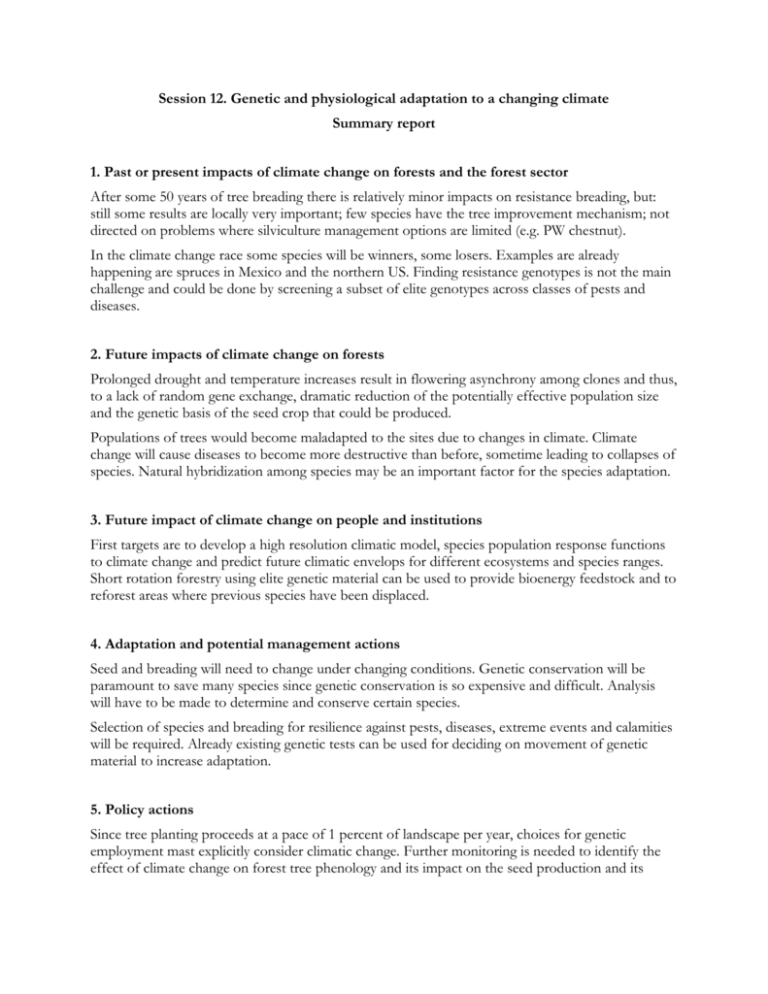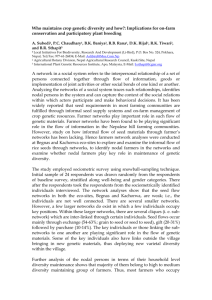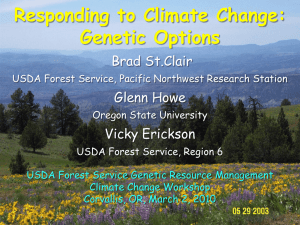MS Word
advertisement

Session 12. Genetic and physiological adaptation to a changing climate Summary report 1. Past or present impacts of climate change on forests and the forest sector After some 50 years of tree breading there is relatively minor impacts on resistance breading, but: still some results are locally very important; few species have the tree improvement mechanism; not directed on problems where silviculture management options are limited (e.g. PW chestnut). In the climate change race some species will be winners, some losers. Examples are already happening are spruces in Mexico and the northern US. Finding resistance genotypes is not the main challenge and could be done by screening a subset of elite genotypes across classes of pests and diseases. 2. Future impacts of climate change on forests Prolonged drought and temperature increases result in flowering asynchrony among clones and thus, to a lack of random gene exchange, dramatic reduction of the potentially effective population size and the genetic basis of the seed crop that could be produced. Populations of trees would become maladapted to the sites due to changes in climate. Climate change will cause diseases to become more destructive than before, sometime leading to collapses of species. Natural hybridization among species may be an important factor for the species adaptation. 3. Future impact of climate change on people and institutions First targets are to develop a high resolution climatic model, species population response functions to climate change and predict future climatic envelops for different ecosystems and species ranges. Short rotation forestry using elite genetic material can be used to provide bioenergy feedstock and to reforest areas where previous species have been displaced. 4. Adaptation and potential management actions Seed and breading will need to change under changing conditions. Genetic conservation will be paramount to save many species since genetic conservation is so expensive and difficult. Analysis will have to be made to determine and conserve certain species. Selection of species and breading for resilience against pests, diseases, extreme events and calamities will be required. Already existing genetic tests can be used for deciding on movement of genetic material to increase adaptation. 5. Policy actions Since tree planting proceeds at a pace of 1 percent of landscape per year, choices for genetic employment mast explicitly consider climatic change. Further monitoring is needed to identify the effect of climate change on forest tree phenology and its impact on the seed production and its genetics. Genetic resources in the developing countries are at risk because of lack of understanding. Urgent policy actions are needed to raise awareness and provide capacity building in the countries.











